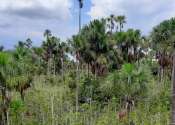New data-driven map reveals extensive peatlands in Amazon Basin
A consortium of researchers led by the University of St Andrews, Scotland, and Charles University, Prague have developed a new data-driven map which predicts substantially more peatland area in the Amazon basin than previously ...








